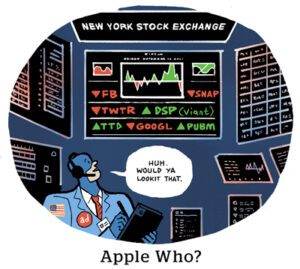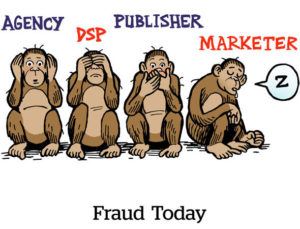Here’s today’s AdExchanger.com news round-up… Want it by email? Sign up here.
Beware Of Biddable
When programmatic meets TV carriage rights, the result can be pretty messy.
One reason is because programmers, streaming apps and distributors all have sales rights for the same inventory, and so advertisers end up bidding against themselves in supply paths that don’t talk to each other, said Lara Koenig, MiQ’s global head of product, on stage at CTV Connect in New York City on Wednesday.
Not to mention that CTV reselling is on the rise. Some auctions have as many as 59 intermediaries, according to recent MiQ research, which leads to inappropriate pricing, Koenig said.
When buyers bid on a deal ID for supply from multiple publishers, for example, impression delivery skews toward whichever channels have the most available inventory at that moment, she said. The result is that buyers overpay for ad repetition and, in turn, get a lower return on investment.
Hence the renewed interest in striking direct relationships for TV ad buying.
Rather than deal IDs, bidding on bundle IDs through private marketplaces can give buyers more control over ad placements for a particular publisher at a lower price point, Koenig said.
“App bundle-based bidding is critical” to the next growth phase of programmatic CTV, she said.
There In A Snap
Snap is a case study for how scale and network effects determine winners and losers in the digital economy.
Although Snap has long been viewed as a potential challenger to the likes of Facebook, Instagram and YouTube, it’s never quite made it.
Apple delivered a knockdown blow with the ATT rollout in 2021. But for comparison’s sake, TikTok went from zero to mass scale in the US seemingly overnight.
Snapchat’s problem isn’t just about organic user growth and monetization trade-offs. For ad buyers, there seems to be an inescapable purgatory populated by apps like Snapchat and Pinterest (or sites like The New York Times or NBC), which may be a fit for one-off campaigns or specific audience segments. But they’re not an always-on workhouse item on the media plan.
And does Snapchat work for SMBs and local businesses? For B2B marketers? These are valid questions. To carve out its spot, Snapchat needs more than just entertainment studios, DTC brands and Fortune 1,000 companies on its advertiser roster.
The “root changes” Snap should make to its platform to address agency-side needs haven’t happened yet, one anonymous buyer tells Digiday.
Here We Go Again
TikTok is back on the hot seat – and that hot seat is located in Washington, DC.
On Tuesday, the House passed a bill – the ominous-sounding Protecting Americans from Foreign Adversary Controlled Applications Act – that could result in a TikTok ban in the US. The bill now heads to the Senate. If it passes there, President Biden has said he will sign it into law, CBS News reports.
Should the bill succeed, ByteDance must divest TikTok within six months or face a ban from US app stores and web hosts.
TikTok has been on the hot seat before. ByteDance has 170 million American users, and US lawmakers have frequently raised the specter of the Chinese government commandeering the company’s data and surveilling users.
But TikTokers aren’t pleased with lawmakers. A December Pew Research Center survey found that only 38% of US adults support a ban, down from 50% in March. Last week, TikTok mobilized users to bombard representatives with calls opposing the ban … although that effort kinda backfired.
Still, despite bipartisan support in the House, if history is any indication, this bill will languish in the Senate before melting away.
But Wait, There’s More!
MediaLink CEO Michael Kassan has accused UTA of fraud, breach of contract. A countersuit alleges extravagant misuse of company funds on the part of Kassan. [Variety]
DTC and digital-native brands are cutting back on agencies. [Ad Age]
Amazon and Google quietly tamp down generative AI expectations. [The Information]
Sprouts of hope in a gloomy media landscape. [NYT]
X has lost its TAG brand safety certification. [tweet]
YouTube is revamping its TV app to make videos feel way more interactive. [The Verge]














